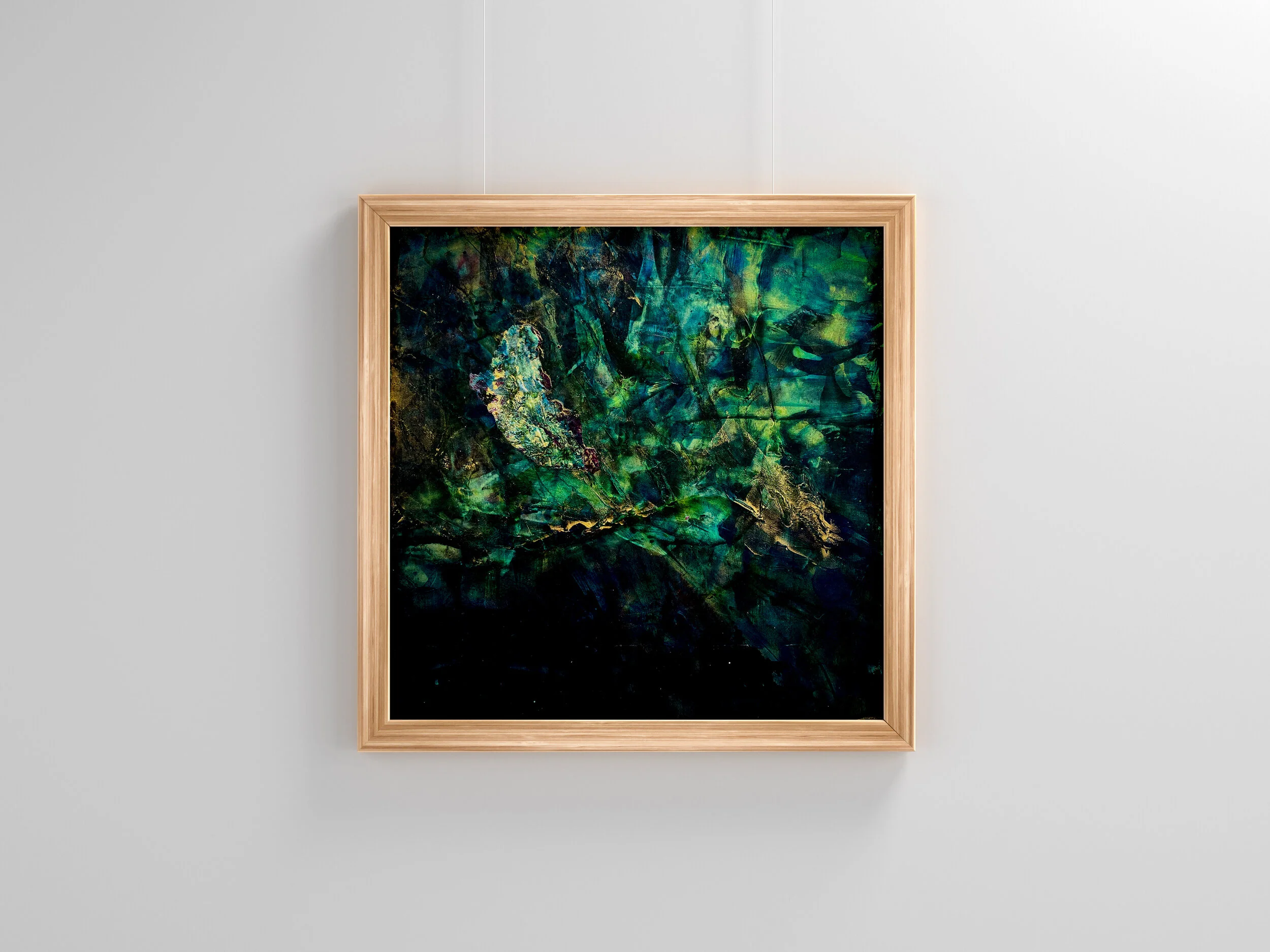It all starts with an idea.
Because I’m a self-taught artist, I approach creating a series like writing chapters for a book. I was an interdisciplinary researcher and find that my artistic process is similar. While my work may not be completely original, it is my perspective that hopes to find something new.
At the beginning of this year, while the US began the early phases of the lockdown, I started reading works by Thich Nhat Hanh, the Buddhist monk responsible for our modern-day notions of mindfulness, in which he compared the Earth to a Bodhisattva - or enlightened being.
It was this saying that unlocked the premise for all the abstract paintings I created in 2020. What is the world trying to tell us right now? How does it require a new kind of perspective? How can I shift the way I look, hear, feel and understand things?
What if I could lean into the world’s conversations, the way a student does when their favorite teacher is speaking?
New Moon, Dream-Time & World-Time, Dreaming Moon, Bridge Between and The Sun Loves the Moon were the first set of works created while I reread science-fiction and fantasy by Octavia Butler, N.K. Jemisen and Ursula K. Le Guin.
This is not unlike practices of the “literati” that artist Hung Liu describes of her generation. In fact, I had naturally slipped into this practice based on my college days of studying Gertrude Stein and the Lost Generation writers, artists and musicians creating modern art in the aftermath of WWI and WWII.
Precarious Life, Life in Ruins, and Propagates 1-2-3 emerged while I read works by Anne L. Tsing, Donna Haraway, Anne Cheng, Isabella Olsen, Robin Kimmerer and other speculative feminists. Ranging from anthropology to sociology to physics, these academics and scientists are creating new creative discourses for how we converse, examine and consider the world.
They observe and locate much of the world’s destruction in settler imperialist tactics and the need for new ways of engaging with the world through kinship, indigenous community-building and/or listening to the land.
The Great Silence marks a turning point for me. I return to science-fiction, with Exhalation by Ted Chiang and The Three-Body Problem by Cixin Liu, as reminders of the premise that kicked off this year’s series of abstract artworks. The great silence, or Fermi’s paradox, is a hypothesis for the absence of communication from interstellar intelligence. Mathematically speaking, given the vastness of the universe, why hasn’t anyone reached out yet?
With the collapse of the Arecibo observatory, radio astronomy has suffered a huge loss. As I read reports of the setback, I am reminded of the human desire to make meaning out of chaos. Embedded within this are complex desires and projections - for example, the belief that superior intelligence equates to morality - or the fear that aliens will see us as mere bugs (as proposed in Cixin Liu’s work).
Running parallel to these meta-considerations, I have generated a series of smaller art paintings (8 x 8, acrylic on gessoboard, a departure from canvas) inspired by Rumi’s poetry. So much of his work beckons to me like a call across time and space. That feeling of leaning in to hear the words of a master is evident when I read his poetry.
Like mushrooms sprouting up a tree to follow the path of light, I think about how our human actions, depending on our perspective, can appear inconsequential or uninformed when we subscribe meaning to things beyond our knowledge. For example, if we don’t see the sun or canopy of trees, we may imagine the sunlight as an omniscient being, dictating the pathway of our fungi kingdoms in spotty and diffuse ways.
I think of Rumi’s poem, Story Water, which beckons us to “sit in the middle of fire” and embrace the unknowns of the universe. The effort to make meaning out of chaos presents its own glories, and a reminder that the work itself is also magic in the making. We can hope that it will lead us to liberation - just as one day our cries to the universe may be answered.


